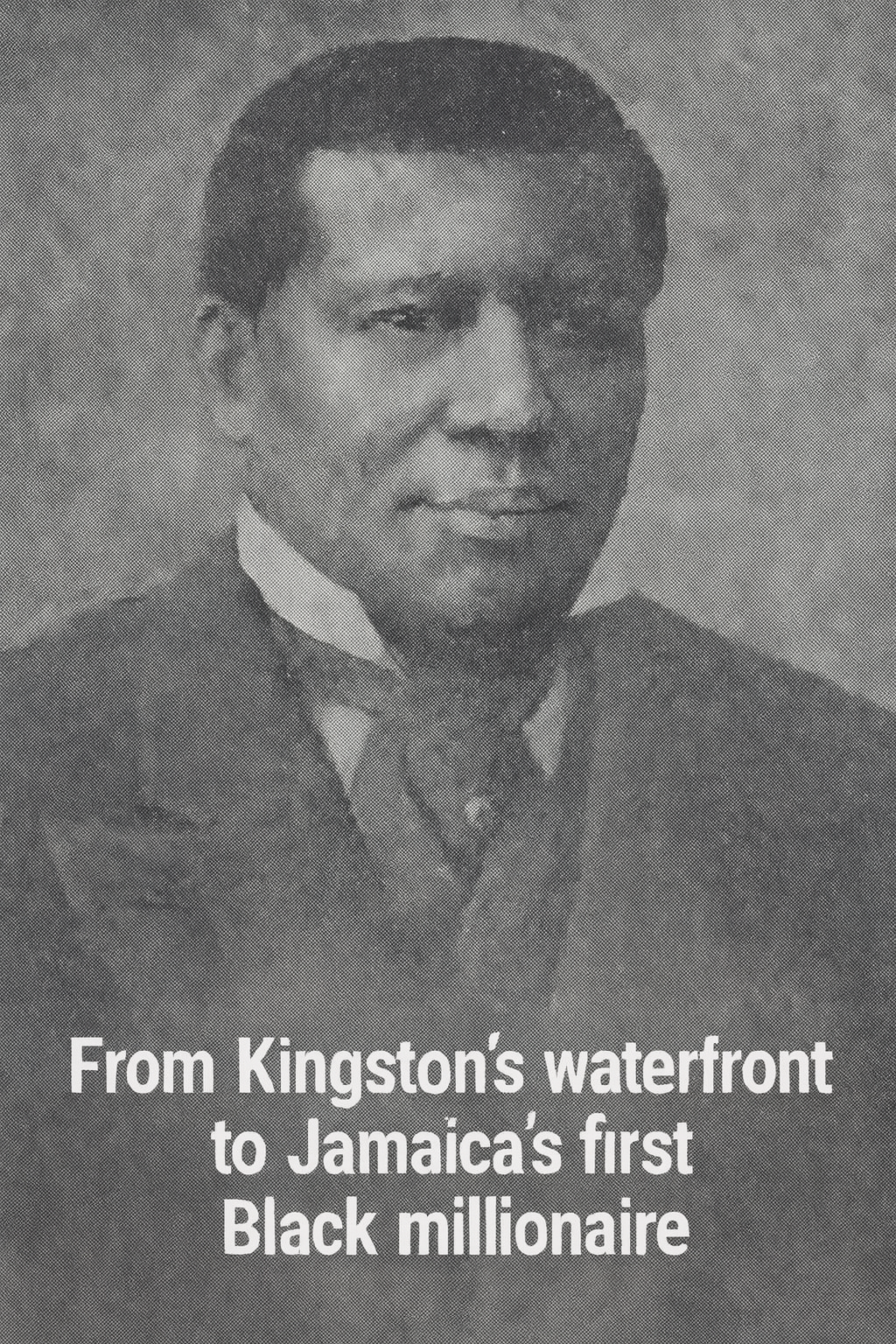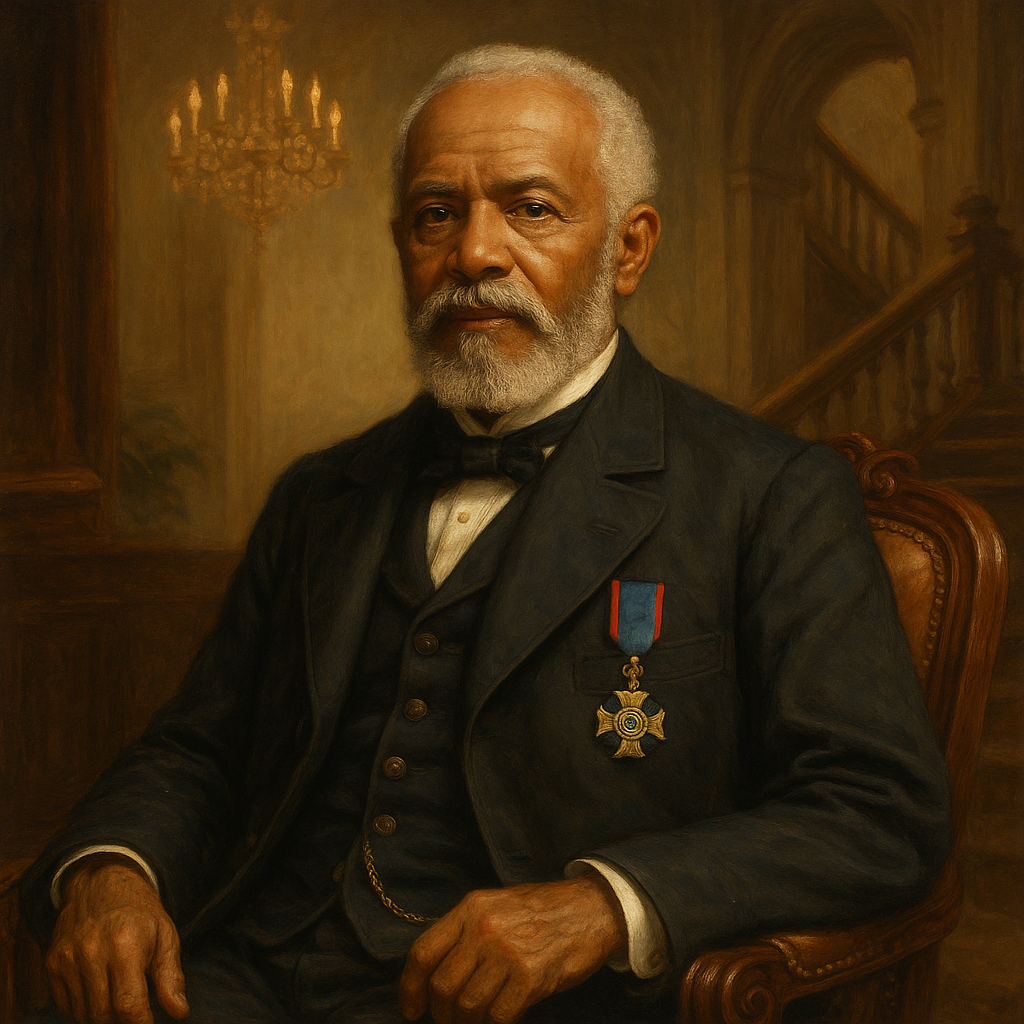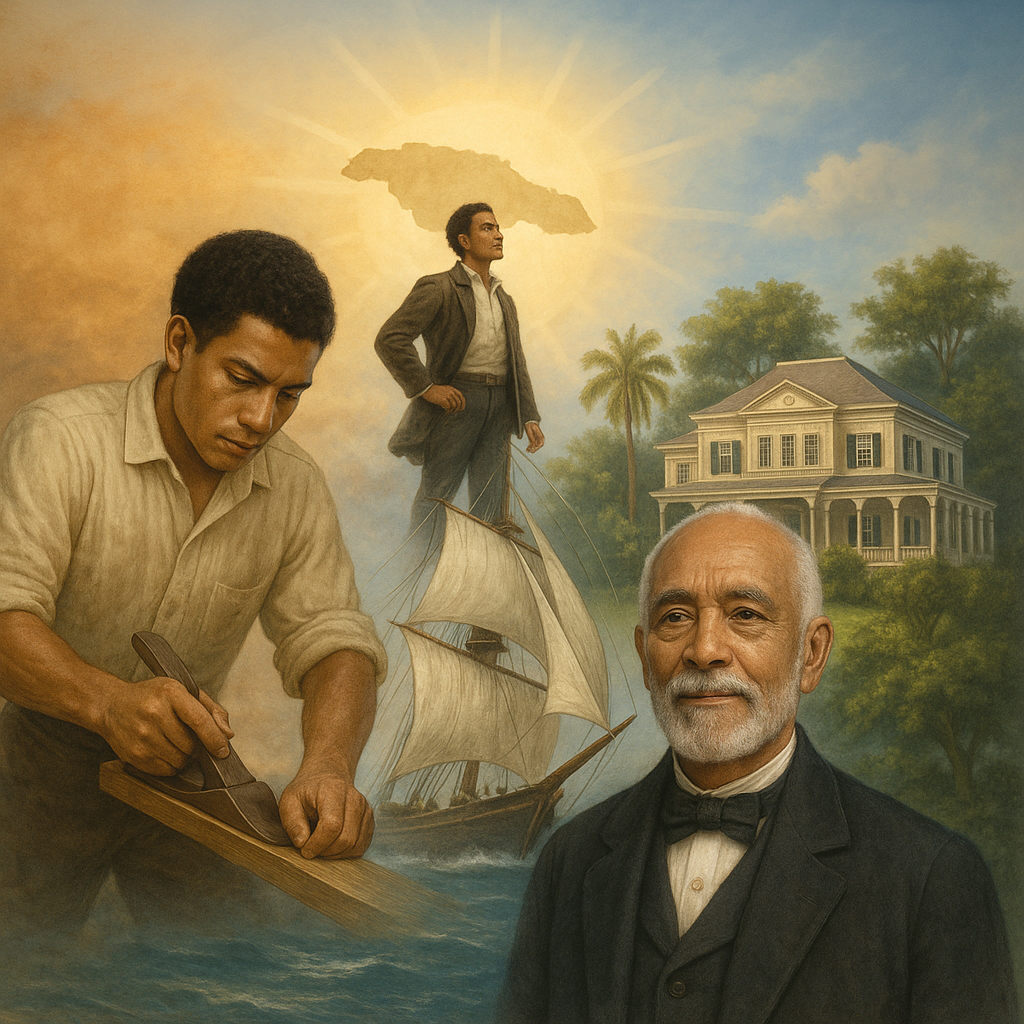
When people stroll through the cool courtyards of Devon House in Kingston, most only see the ice cream shop, the graceful arches, the grand 19th-century walls. Few stop to imagine the man behind it all — a man born to humble beginnings, who climbed every rung of society through grit, brilliance, and a touch of destiny. His name was George Stiebel, and his story is the very definition of Jamaican ambition.
From Apprentice to Adventurer
George Stiebel was born in Kingston in the early 1820s, the son of a German-Jewish merchant and a Jamaican mother of African descent. As a boy, he wasn’t born into privilege. He left school early, apprenticed as a carpenter, and learned how to build things with his hands — lessons that would one day help him build an empire.
But George had bigger dreams than the small workshop could contain. By his late teens, he was working along the busy waterfront, mingling with sailors, merchants, and dreamers who traded between the Caribbean islands and South America. The sea called to him — wild, unpredictable, and full of promise. Soon, he began running small ships of his own, carrying goods from Jamaica to Venezuela and back.
Storms, Setbacks, and Striking Gold

Life on the seas was no easy fortune. Stiebel endured shipwrecks, betrayal, even imprisonment in Cuba. But nothing could break his will. When fate turned against him, he simply found another way forward.
In the 1850s, opportunity shimmered from across the Caribbean — gold in the hills of Venezuela. Stiebel packed his courage and set sail once again, this time trading and later investing in the gold mines. His risks paid off spectacularly. By the early 1870s, the young Jamaican had struck it rich, becoming one of the wealthiest men in the region — and by many accounts, Jamaica’s first Black millionaire.
The Return Home
When George returned to Jamaica, he came not just as a wealthy man, but as a man with vision. He bought properties across the island — from Kingston’s wharves to the lush lands of St Ann. But his masterpiece would rise in the heart of St Andrew — a magnificent mansion he named Devon House.
Built in 1881, Devon House wasn’t just a home; it was a statement. Its grand Georgian lines, wide verandas, and sweeping staircases declared that a Black Jamaican man could not only amass wealth but also create beauty, elegance, and legacy on his own terms. For a society still steeped in colonial hierarchies, it was revolutionary.
A Man of Service and Substance

Wealth never made George Stiebel forget his duty to country. He served as Custos of St Andrew, guiding civic affairs and helping to organize the Jamaica Exhibition of 1891, a world’s fair-style showcase meant to promote Jamaican culture and enterprise. For his service, Queen Victoria honored him with the title Companion of the Order of St Michael and St George (CMG) — a fitting recognition for a man who had once been denied entry into the upper circles of power.
The Legend and the Legacy
Stiebel’s life wasn’t without sorrow — he lost loved ones, faced social prejudice, and endured the isolation that often shadows great ambition. Yet when he passed away in 1896 at Devon House, he left behind something far greater than gold or titles. He left a symbol — proof that determination, intelligence, and courage could carve a path where none existed.
Today, Devon House stands proudly as a National Heritage Site, its walls echoing with the same strength and grace that defined its builder. In 2023, a bronze bust of George Stiebel was unveiled there, crafted by sculptor Basil Watson — a timeless tribute to the man whose story began with a hammer and a dream.
The Heart of His Story

George Stiebel’s journey is not just about wealth — it’s about transformation. He built bridges between worlds: race and class, labor and luxury, hardship and triumph. His life whispers a truth every Jamaican knows deep down — that greatness can rise from anywhere, even from the dust and heat of Kingston’s streets.
When you walk through Devon House today, take a moment to look beyond the walls and into history. The story you’ll find is one of resilience, pride, and the power of vision — the story of the carpenter who became a king in his own right.
